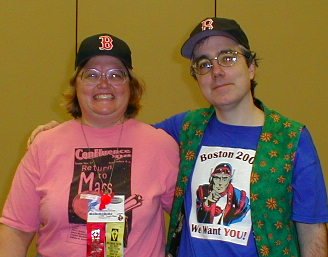The Prestige (the movie)
To answer this, I have to go back to the book and look at what is different between book and movie. I should first say, though, that I don’t feel that a movie has to slavishly follow the book it’s based on, and that in fact this can be a bad idea. Movies and books are different things, and what works well in one may not work well in the other. A number of the changes Nolan made were necessary and effective. The book weaves back and forth between contemporary times and the late 1800s, the time in which the two magicians, Borden and Angier, perform and feud. Bale drops this and stays in one time. The changes that left me dissatisfied go deeper than that.
Both book and movie tell the story of the two great magicians – Angier and Borden. Both are men driven to continually one-up the other, and both at times do nasty things to one another. But, in the novel, the two characters both have aspects with which we sympathize, in part because Priest shows us that each feels stuck in the cycle of revenge and tries, at some time or another to break out. Angier, in particular, is someone who we come to understand and care about. In the movie, on the other hand, Angier is someone we don’t care about, and, by movie’s end, really don’t like at all.
WARNING: SPOILERS FOLLOW
Nolan makes two key changes that destroy any sympathy we might have for Angier. He frames Borden for his (Angier’s) murder, letting him go to the gallows in cold blooded fashion. Perhaps more importantly though is the way the great “illusion,” the New Transported Man, works. In both book and movie, it serves as a transporter device. In the book, it leaves behind a dead version of the person transported. In the movie, it leaves behind a living one, though one who is seems mentally disturbed. Angier deals with this by callously killing the version of himself left behind (in the trick by dropping him into a tank of water beneath the stage where he drowns). These two changes to the novel go together – Nolan needed the latter to enable the former, and to set up the mystery of the Prestige. But in making these changes, he built a wall between the audience and his characters.
Perhaps I wouldn’t have minded this as much had I not read the book. I like other movies where the characters are unsympathetic. But, in this case, I liked the characters in Priest’s novel and was disappointed that the characters on the screen were not these characters.
I should emphasize that, despite this, I liked the movie. There is much to admire here. As I said above, it has an enthralling plot, great acting, and wonderful sets. Nolan also does an effective job directing, weaving the parts of a complex story together and giving us clues along the way of what is going on. This is yet another good movie from a very good director. In the end, my sense of letdown comes, I think, from going into expecting a great movie. But do indeed go and see it. There is a lot to admire and much to enjoy here.

